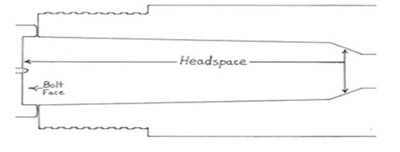

| We want your feedback! Please let us know what you think about TFS. Do you have an interesting story or article that you would like to share? If so, please let us know!
|
Reader Comments:
Regarding the latest update, outstanding work again by the whole CMP crew! New or improved programs, expanded scholarships, new or improved facilities, new rifle and accessory offerings and the super relationships CMP has developed with the ONG and NRA leadership are shining examples of what can be done when one's heart is in the program. You all should be justifiably proud of how the program has progressed into its second century. Somewhere President Teddy Roosevelt has a big grin and is saying a hearty Bully for the CMP! Regards, LTC John F., USAR ret'd
I have truly enjoyed your Shooting Tips site. Even as a 25 yr veteran police sniper/high power shooter,I still find interesting,and useful tips from the successful younger folks coming up through the military,and law enforcement. Keep up the good work!
Det.Tim R.
Wow! Please forward my thanks to everyone responsible for all the improvements I just read about at Camp Perry. Recent years have included quite a few impressive improvements and it looks like there are more this year. The Air Gun range, bath house at RV Park, Bataan Armory remodel, etc are all great. Just letting you know how much we (competitors) appreciate all the work.
Sincerely...
Grayson P.
CMP Shooters' News is one of my favorite email news publications. Information packed, talented authors, timely subjects, and all around well done. What a great service you are providing to the shooting community. Just wanted to say thanks and Merry Christmas.
Newt E.
I enjoy and look forward to TFS and the excellent articles that are published on a regular basis.
Please keep this publication coming and keep the CMP active.
Don M.
One of the members at Snipers Hide pointed out the newsletter and the High Power Tips articles by the USAMU team.
Darn you! I was up until 1:00 AM last night reading all of the articles. Great newsletter and really great USAMU articles.
Thanks,
Michael E.
Great article written on physical conditioning in the latest TFS. I was one of likely many who had asked about the type of conditioning recommended for serious shooters. Sgt. Craig did a great job on describing the routines. Now it’s my turn to put it to work.
Thanks to you, Sgt. Craig and other contributors who share best practices of shooting excellence.
Sincerely,
Keith H.
I use these articles in our high power clinics and have found them very helpful for both new shooters and reinforcement of the basics for the more experienced.
Thanks, Gary M.
Thanks for the great articles on the Carbine, Springfield, Garand matches. All the articles are interesting, but the Carbine, Springfield & Garand are my favorites.
Jim H.
The September-07 on line shooting tips by SSG Tobie Tomlinson, USAMU Service Rifle Team Member, is a great article. I have reproduced 15 copies of it to hand out and discuss to our “newbie” first year air rifle shooters on our high school JROTC Air Rifle Team. Come to think about it believe I’ll hand out a copy to my advance shooters as well. His explanations are simple to understand but rich in detail. Coupled with the sight pictures this article will go a long way towards helping all our JROTC shooters obtain better sight patterns. Keep up the great work. AND…..keep the articles like this coming.
Malcolm V.
CW2 (R), US Army
|
|
|
|
 |
Everything you ever wanted to know about
checking M1 Garand head space
Written by
John McLean, CMP Armorer
|
|
Why should I care about the headspace of my rifle?
When a rifle is fired, the pressure generated inside the chamber rises to tens of thousands of pounds per inch. This pressure generated by the primer and burning powder can do serious harm to you or others around you if something goes wrong and the hot, high pressure gasses escape through a breech in the brass cartridge case.
Excessive headspace will cause the brass to stretch more than it should and increases the likelihood of a case failure.
Insufficient headspace may contribute to slam fires, light strikes on primers, misfires and more wear on parts due to the additional force needed to chamber the rounds.
Headspace:
Headspace is defined as the space or distance between the face of the bolt and a specific predetermined point in or at the chamber.
|

|
For bottlenecked rimless cartridges like the 30-06, headspace is measured from a point on the chamber’s shoulder to the bolt face. There are other types of cartridge designs that require headspace to be measured in very different ways, some of these are known as rimmed, belted and straight wall rimless. We will not cover these here.
Understanding what headspace is and knowing how to properly measure this distance is fundamental, necessary and critical information for anyone interested in changing or altering any of the parts that affect this aspect of a firearm.
Gauges:
There are a number of companies that manufacture headspace gauges, the two that are most commonly encountered are Forster and Clymer. Both Forster and Clymer make fine gauges but we have found that there are differences between the two companies’ gauges that make the Clymer gauges best for use with the M1.
The M1 was not designed as a match rifle with minimum tolerances; it was a semi automatic battle rifle that had to function in dirty, wet, sandy unpleasant conditions on the battlefield.
The headspace that the original manufacturers of the M1 considered correct can be determined by checking new or nearly new rifles that we have here at CMP. With that information we have determined that Springfield Armory and the other manufacturers of the M1 used gauges that were very close to the Clymer dimensions (closer than the Forster) and therefore we use, and recommend using only the Clymer gauges.
The three gauges you will encounter are the “GO”, “NO GO” and “FIELD”. CMP only uses “GO” and “NO GO” gauges but I will describe all three.
The “GO” gauge- is most commonly used when installing a new barrel and reaming the chamber to size. The bolt
should fully close on the “GO” gauge; if it fully closes you can be sure you have enough room in the chamber to prevent the cartridge from being crushed during chambering. The “GO” gauge can also be thought of as a minimum safe headspace gauge and the rifles bolt must be able fully close with it in the chamber.
The “NO GO” gauge- is used to make sure a firearm does not have excessive headspace. The bolt
should NOT fully close on the “NO GO” gauge; if the bolt cannot be closed on the “NO GO” gauge then you know your rifle does not have headspace that is excessive. The “NO GO” gauge can be thought of as a maximum headspace gauge and should not be able to fit in the rifles chamber with the bolt fully closed. If the bolt
DOES close on the “NO GO” gauge, it does not necessarily mean that the rifle is unsafe; it does however show that a further check with the “FIELD” gauge would be necessary to determine if it is safe to shoot.
The “FIELD” gauge- is used to check absolute maximum headspace.
If the bolt closes fully on the “FIELD” gauge the
rifle IS NOT to be fired
and should be considered unsafe to shoot. CMP does not use this gauge because rifles that pass the “FIELD” check but fail the “NO GO” are approaching the point where they will be unsafe to shoot. Our standard for maximum headspace is the “NO GO” gauge to ensure our customers will be able to shoot safely for many years.
Using the gauges:
In order to obtain a true measurement of the rifles headspace there are several things that must be done before inserting the gauges into the chamber.
-
The stock, trigger group, op rod, op rod spring, and follower rod must be
removed from the rifle.
-
Because the M1 rifle has a spring loaded ejector on the face of the bolt, one of two things must be done to prevent the ejector from affecting your proper reading of the headspace. The bolt must be disassembled and the ejector removed, or clearance notches must be made on the headspace gauges so there will be no contact between the headspace gauges and the ejector. See figure 3.
-
The chamber and the bolt face must be clean and free of anything that would cause a false measurement to be received, this would include dirt, heavy fouling and rust. When replacing a rifles barrel, the process of reaming the barrels’ chamber to the proper dimensions will produce metal shavings and possibly burrs or other debris which must be removed.
-
Manually move the bolt by itself through its cycle of movement in the receiver. Make note of any binding as you move the bolt forward and rotate
it fully into battery. You should be able to easily close the bolt on an empty chamber. If there is some very minor friction as you rotate the bolt fully into battery you need to be aware of it so it does not cause you to receive a false headspace reading. If the friction or resistance is more than “very minor” have your rifle checked out by an experienced gunsmith.
When the rifle has been properly prepared and the gauges notched to clear the ejector, the following procedure should be followed.
-
With the bolt tilted up but still in the receiver, place the “NO GO” headspace gauge on the face of the bolt with the extractor hooked around the rim of the gauge and the ejector notch lined up with the ejector. See figure 1.
-
Lower the bolt into its normal position in the receiver and slide it forward, rotate it gently as far into battery as it will go with light pressure on the right bolt lug. The bolt should not be able to rotate fully into battery and there should be a gap beneath the right lug of at least the thickness of a couple of business cards. See figure 2.
-
If the rifle passes the “NO GO” gauge, remove the gauge from the rifle. Insert the “GO” gauge. The bolt should be able to fully close on the “GO” gauge.
-
If your rifle passes both of these checks then your rifles headspace is within the safe operating range as demonstrated by proper use of the gauges.
SAFETY WARNING: This information is provided as a base of information and cannot take into consideration every possible condition or defect that may be encountered. Correct and safe headspace is governed by the bolt, barrel and receiver in a rifle and is determined by qualified people using quality headspace gauges. Bolts varied in length during their years of production. If for any reason you wish to replace the bolt in an M1 rifle, the bolt should be checked to ensure it is serviceable and safe headspace verified. Swapping bolts without these checks may result in a dangerous condition.
NEXT
ARTICLE |
|
|


